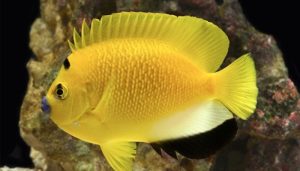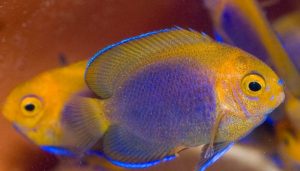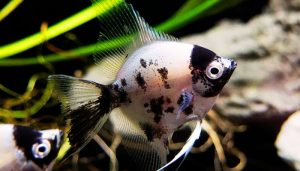Have you ever wondered how to keep your aquarium clean while giving your fish a lush, natural habitat? The benefits of adding najas indica Guppy Grass to your aquarium go beyond aesthetics—it enhances water quality, provides shelter, and supports a thriving ecosystem.
This simple aquatic plant can be a game-changer for both novice and experienced aquarists.
Guppy Grass in your aquarium helps maintain water quality by absorbing excess nutrients, reducing algae growth, and oxygenating the tank.
It serves as a perfect hiding spot for small fish and fry, increasing their survival rates. Aquarists like Takashi Amano have praised natural plants for promoting a balanced and healthy aquatic environment.
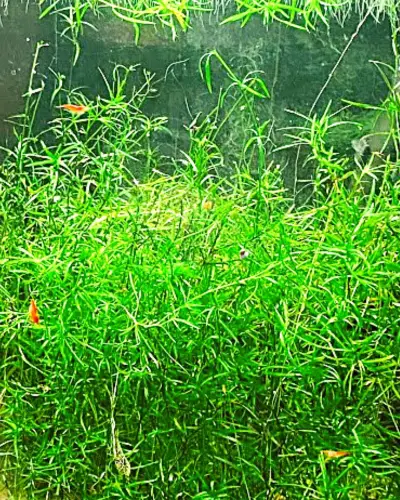
But there’s more to Guppy Grass than just filtration and shelter. It can be a breeding haven, a food source, and an easy-to-care-for addition to your tank.
So, let’s dive deeper into why this plant is a must-have for your aquarium!
Table of Contents
ToggleDiscovering Guppy Grass: An Overview
Guppy grass AKA Najas Grass is a versatile aquatic plant that thrives in various water conditions, making it an ideal choice for aquarists. Known for its rapid growth rate, guppy grass can easily adapt to both low light and high light environments.
Its long, slender leaves provide shelter for small fish and shrimp, thereby creating a natural habitat within your aquarium. Additionally, guppy grass serves as an excellent oxygenator and helps improve water quality by absorbing excess nutrients, which can reduce algae growth.
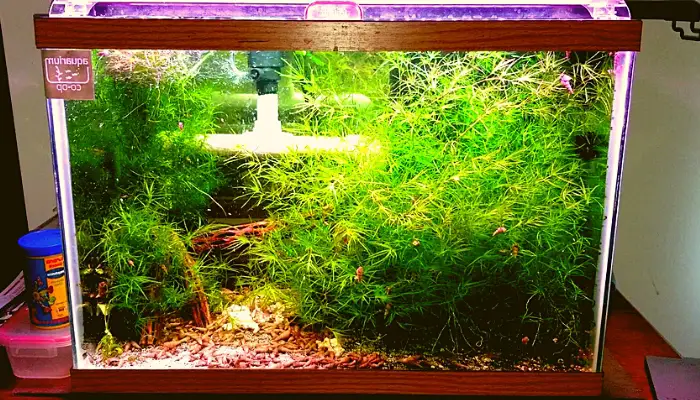
This aquarium plant is often used in shrimp farms due to its ability to create a lush, visually appealing environment. Guppy grass isn’t just beautiful; it also plays a vital role in maintaining the health of your aquarium ecosystem.
For those looking to create a balanced aquatic environment, understanding the essentials of guppy grass is crucial. It’s easy to care for and can be introduced into various tank setups without much hassle, making it a favorite among both novice and seasoned aquarists.
The 7 Benefits of Adding Guppy Grass to Your Aquarium
Adding Guppy Grass (Najas guadalupensis) to your aquarium can provide numerous benefits for both the aquatic environment and its inhabitants. Here are some of the key advantages:
1. Improved Water Quality
- Natural Filtration: Guppy Grass absorbs excess nutrients like nitrates, phosphates, and ammonia, which helps prevent algae overgrowth and maintains water clarity.
- Oxygenation: Through photosynthesis, Guppy Grass releases oxygen into the water, promoting a healthier environment for fish and other aquatic organisms.
2. Shelter and Habitat
- Hiding Spots: The dense, bushy growth of Guppy Grass provides excellent hiding places for small fish, shrimp, and fry, reducing stress and increasing survival rates.
- Spawning Ground: Many fish species use Najas guadalupensis Grass as a spawning site, as its fine leaves offer protection for eggs and newly hatched fry.
3. Aesthetic Appeal
- Natural Look: Guppy Grass adds a lush, green aesthetic to your aquarium, creating a more natural and visually appealing environment.
- Versatile Placement: It can be left floating or planted in the substrate, making it adaptable to different aquascaping styles.
4. Low Maintenance
- Easy to Grow: Guppy Grass is a hardy plant that thrives in a wide range of water conditions, making it ideal for beginners.
- Fast Growth: Its rapid growth rate means it can quickly fill in empty spaces and outcompete algae for nutrients.
5. Supports Aquatic Life
- Food Source: Some fish and invertebrates nibble on Guppy Grass, making it a supplementary food source.
- Microhabitat: The plant hosts beneficial microorganisms that contribute to the overall ecosystem balance.
6. Algae Control
- Nutrient Competition: By consuming excess nutrients, Guppy Grass helps limit the resources available for algae, reducing its growth.
- Shade Provider: When floating, it can block excessive light, further inhibiting algae proliferation.
7. Cost-Effective
- Affordable and Prolific: Najas guadalupensis is inexpensive and grows quickly, so a small amount can rapidly expand to fill your tank.
8. Compatibility
- Suitable for Various Tanks: It works well in community tanks, shrimp tanks, and breeding setups, making it a versatile addition to many types of aquariums.
By incorporating Guppy Grass into your aquarium, you can create a healthier, more balanced ecosystem while enhancing the beauty and functionality of your tank.
Farming Guppy Grass: Planting and Tank Conditions
How to plant guppy grass? Cultivating guppy grass is a straightforward process, thanks to its easy care requirements. To get started, simply plant it in the substrate or let it float on the surface of the water.
If you choose to plant it, make sure the substrate is nutrient-rich to support its growth. Guppy grass thrives in a range of water conditions, but it prefers slightly acidic to neutral pH levels and a temperature range of 72 to 82 degrees Fahrenheit.
Providing proper lighting, even low light, can stimulate its growth and encourage vibrant green color.
Additionally, maintaining stable water parameters and performing regular water changes will greatly benefit your guppy grass. Regular monitoring of water quality is essential to prevent any imbalances that could affect the growth of this aquatic plant.
Incorporating guppy grass into your tank setup can also benefit other plants, as it helps create a balanced ecosystem. Overall, cultivating najas indica requires minimal effort, making it a must-have addition for any aquarist looking to enhance their aquarium.
Propagating Guppy Grass: Growth tips
Propagating guppy grass is a simple yet rewarding process that allows you to expand your aquarium’s greenery. This plant naturally propagates through side shoots, which can be easily harvested.
Once you notice new shoots developing, gently separate them from the parent plant and either replant them in the substrate or let them float. This method of propagation ensures that you can enjoy a lush aquarium without needing to purchase additional plants.
Furthermore, guppy grass grows rapidly under the right conditions, making it easy to maintain a thriving aquatic environment. Regularly trimming back excess growth will encourage denser foliage and healthier plants.
For those interested in expanding their najas indica collection or sharing with fellow aquarists, these propagation techniques are essential. With just a little guppy grass care and attention, you can enjoy a beautiful, green aquarium filled with thriving najas indica plants.
Frequently Asked Questions about Guppy Grass Essentials (FAQs)
Can guppy grass be planted?
Yes, Najas guadalupensis can be planted, but it is more commonly used as a floating plant in aquariums.
Can guppy grass grow in gravel?
Guppy grass (Najas guadalupensis) can grow in gravel, but it may not anchor as well as it would in a finer substrate like sand or aquarium soil.
Do guppies eat guppy grass?
Guppies do not eat guppy grass. They use it for hiding and breeding, but the plant itself is not a food source for them.
Does guppy grass grow fast?
Yes, guppy grass grows very fast under optimal conditions, making it an excellent plant for aquariums to provide cover and improve water quality.
Does guppy grass need co2?
No, najas indica grass does not require CO2 injection. It grows well in low-tech aquariums with moderate lighting and absorbs nutrients from the water column.
Would it be better to “plant” java moss or guppy grass?
Java moss is better for attaching to surfaces, while guppy grass thrives floating or loosely planted. Choose based on your aquarium’s needs and layout.
How to anchor guppy grass?
Anchor Guppy Grass by planting stems in substrate or using weights/rocks. Alternatively, let it float freely for natural growth. Easy and versatile!
How fast does guppy grass grow?
Najas indica Grass grows rapidly, often doubling in size within 1-2 weeks under optimal conditions like good lighting, nutrients, and CO2. Ideal for quick aquarium coverage!
Conclusion
In conclusion, adding guppy grass to your aquarium is a decision that comes with a host of benefits. From improving water quality to providing shelter for small fish and shrimp, najas indica enhances the overall health of your aquatic environment. Its ease of care and rapid growth rate make it a perfect choice for aquarists of all levels. By learning how to cultivate and propagate guppy grass effectively, you can create a visually stunning and balanced aquarium that thrives with life.
Whether you’re a beginner or an experienced aquarist, incorporating najas indica grass into your tank will undoubtedly enhance your aquatic experience. Its ability to adapt to various conditions and support the ecosystem makes it a valuable addition. Make sure to consider adding guppy grass to your aquarium to enjoy its numerous advantages and create a lively, healthy aquatic habitat.
You might also like
- Koi Guppy Fish Price, Size, and Different Types (Solved)
- Rare Guppy Fish Breeds: A Fascinating World Below Surface
- How to Tell If Guppies are Pregnant? (Exact Signs & Behavior)
- Feeder Guppies: A Comprehensive Guide to Breeding & Caring
- Why Guppy Fish Staying at the Top of the Tank: 7 Causes & Solutions
- Saltwater Guppies: 3 Easy Steps to Thriving in Your Tank!
- Do Guppies Sleep At Night: The Truth about Guppy Fish Sleeping!


